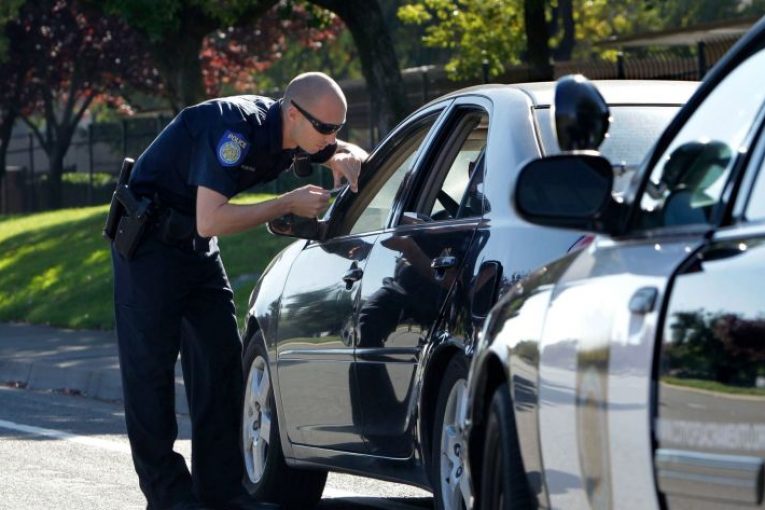

By Cres Vellucci
Vanguard Sacramento Bureau Chief
SACRAMENTO, CA – People of color – particularly Black individuals – were searched, detained, handcuffed and removed from their vehicles in 2020 more than Whites, according to a wide-ranging, 279-page California Racial and Identity Profiling Advisory Board report, released by CA Dept. of Justice.
The fifth annual report on “racial and identity profiling” in policing stop data collected under the Racial and Identity Profiling Act was released at a time – last Friday on New Year’s Eve – that most news media would not have seen it, and the public would not have seen it because of the Dec. 31-Jan. 2 holiday.
Media observers note that government and corporations often choose to deliver bad news on holidays or Fridays, or in this case, both of those, describing those days as “where good news goes to die.”
But the message the report expressed in its conclusion was that not much had changed in the treatment of POC in 2020 compared to previous years, that the “disparities observed in prior years’ data with respect to perceived race, gender, and disability status” are mimicked in the 2020 data.
The Board added, “Similar disparities shown in the data over the years make clear that change is needed to ensure everyone has the equal protection of the law. And, while equality seems like an unattainable goal, the Board will continue to bring individuals with diverse backgrounds together and persevere with this important work toward its common goal of eradicating racial and identity profiling in policing.”
The report, garnered from 18 state and local law enforcement agencies from throughout California, noted, for instance, a “higher percentage of  Black individuals were stopped for reasonable suspicion than any other racial identity group.”
Black individuals were stopped for reasonable suspicion than any other racial identity group.”
The Board noted the report contains “an analysis of the millions of vehicle and pedestrian stops conducted in 2020 by 18 law enforcement agencies in California under the Racial and Identity Profiling Act (RIPA),
“This fifth annual report from the Racial and Identity Profiling Advisory Board provides important analysis of police stops, use of force, and the differential experiences with law enforcement of California’s diverse communities,” said Steven Raphael, Co-Chair of the Board and Professor of Public Policy at UC Berkeley.
He noted the analysis in 2020 “breaks new ground on the experiences with law enforcement of those with mental and physical disabilities, the experiences of members of the LGBTQ+ community, in addition to the detailed analysis of stop outcomes by race, ethnicity, and gender contained in past reports.”
In general, the report claims to have collected “perceived demographic information (including) a wide range of characteristics such as race or ethnicity, gender, age, disability status, English fluency, and LGBT identity.”
The 2020 Board report is exhaustive, but some key findings include:
* Officers admitted using force against Black suspects 2.6 times more than those perceived as White. And officers reported using force against those with a mental health disability 5.2 times more than others.
* A higher proportion of simple traffic infraction stops were made against “Hispanic” or Black people compared to whites – for instance, for stops for “window obstruction” was about 2.5 times higher for “Hispanic” drivers and 1.9 times higher for Black drivers.
* People perceived to be Black were “overrepresented” in the stop data by 10 percentage points, while those perceived as White were “underrepresented” by three points, and Asians by nine points.
* There was a 26.5 percent reduction in vehicle and pedestrian stops in 2020 compared to 2019 – most likely, the report surmised, because of COVID-19 conditions, including lockdowns.
* People perceived as Black were searched 2.4 times the rate of Whites – officers searched 18,777 more Black individuals than Whites, and transgender women were searched 2.5 times the rate of cisgender women.
* Black and Hispanic individuals were more likely to have force used against them compared to White individuals, while Asian and Other individuals were less likely. The “odds of having force used during a stop were 1.32 times and 1.16 times as high for Black and Hispanic individuals, respectively. Asian and Other individuals whom officers stopped had lower odds of having force used against them (0.80 and 0.82 respectively), relative to the odds for individuals officers perceived as White.”
* For people perceived as Black, “no action taken” was reported 2.3 times more often that White individuals – indicating to the Board that a higher rate of Black people stopped were not engaged in unlawful activity.
An interesting note in the report suggested that when it became darker in the day and early evening, the “Veil of Darkness” analysis suggested “darkness decreased the rates at which Black and Hispanic individuals were stopped compared to White individuals.”
The Board encompasses 16 members, including law enforcement, academic, legal, clergy, citizen and community groups.
The 18 law enforcement agencies that reported 2020 RIPA data, which include three early reporting agencies, were the Bakersfield Police Department, California Highway Patrol, Davis Police Department, Fresno Police Department, Long Beach Police Department, Los Angeles County Sheriff’s Department, Los Angeles Police Department, Los Angeles Unified School District Police Department, Oakland Police Department, Orange County Sheriff’s Department, Riverside County Sheriff’s Department, Sacramento County Sheriff’s Department, Sacramento Police Department, San Bernardino County Sheriff’s Department, San Diego County Sheriff’s Department, San Diego Police Department, San Francisco Police Department, and San Jose Police Department.
Report data can be found at OpenJustice. A copy of the report is available here. A fact sheet on the report is available here. A pullout of the recommendations and best practices is available here. The report appendices are available here. More information about the Board is available here.
